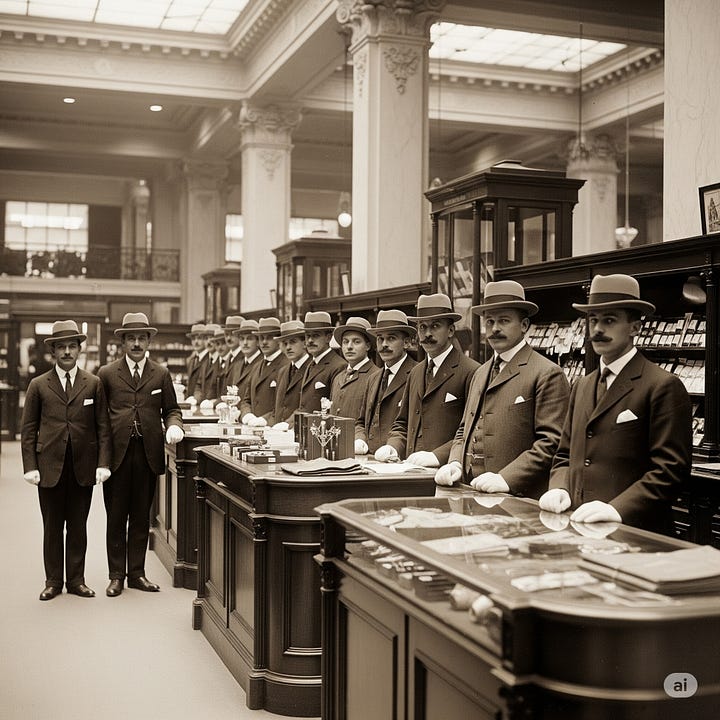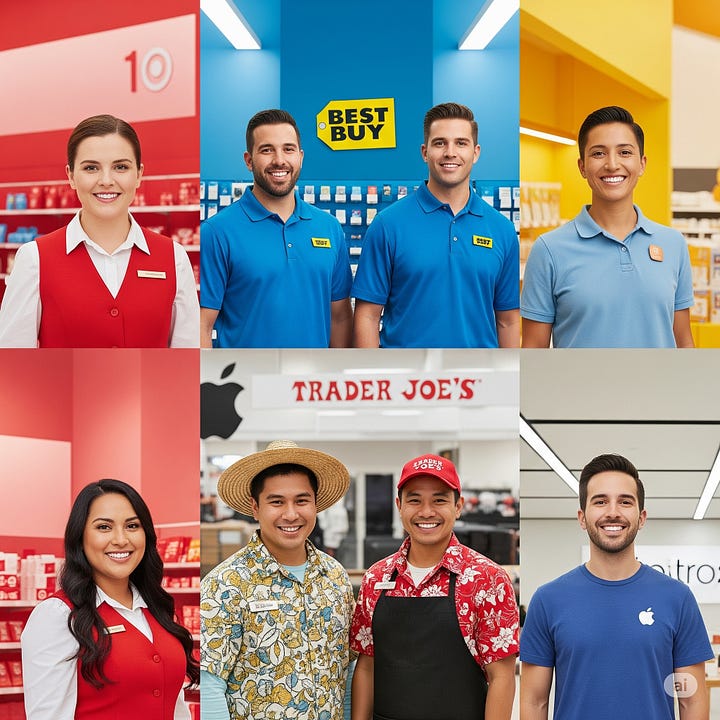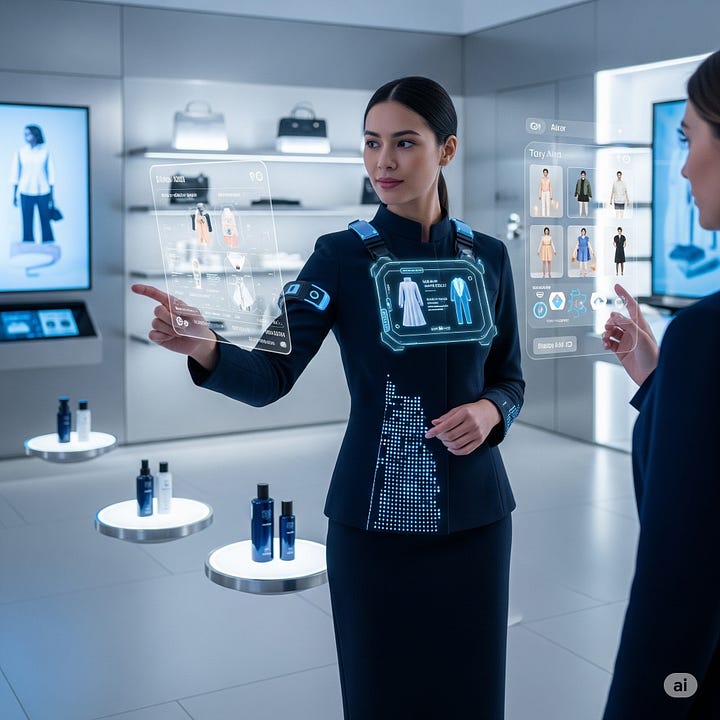🏷️ The Uniform: How Dress Codes Built Retail Culture
From crisp aprons to branded polos, retail uniforms have stitched together trust, identity, and the very fabric of store experience.
Walk into almost any store, and you’ll find a visual clue for who’s there to help: the uniform.
But behind each apron, vest, or nametag lies a deeper story - a blend of tradition, aspiration, and silent promise.
Uniforms weren’t just invented for convenience or neatness. They’ve long played a key role in defining retail’s culture, service expectations, and even social mobility.




🧵 Where Did It Begin?
The concept of retail uniforms dates back to the late 19th and early 20th centuries, when department stores began outfitting floor staff in coordinated attire.
Marshall Field’s in Chicago, for example, dressed sales associates in tailored, conservative black dresses or suits, a look intended to inspire both respect and approachability.
In London’s Harrods, uniformed doormen and elevator attendants reinforced the store’s aura of luxury and order.
Grocery stores and butchers donned clean, crisp aprons to reassure shoppers about hygiene and professionalism - a subtle but crucial trust builder in the days before modern food safety standards.
For many working-class employees, the uniform was more than a dress code - it was a ticket to a new kind of respectability. Wearing the “house colors” of a major retailer meant you were part of something bigger - a visible, trusted member of the city’s commercial engine.
🪡 How Did It Evolve?
As retail grew, so did the symbolism and design of uniforms:
Chain stores in the 1950s and 60s (think A&P, Woolworth’s) introduced brand-colored aprons and hats, making staff immediately identifiable, while also reinforcing the store’s brand presence on the sales floor.
Fast food giants in the 1970s and 80s standardized uniforms globally. The instantly recognizable stripes of McDonald’s or the orange smocks of Home Depot became cultural icons - often showing up in movies and TV as shorthand for “part-time work.”
The advent of the big-box retailer brought bold, simple uniforms: the red vests at Target, blue polos at Best Buy, and khaki pants at Walmart. These not only identified staff, but created a sense of belonging and parity - every employee, from manager to seasonal temp, wore the same “team colors.”
A surprising detail:
Retail uniforms were also tied to social mobility. In the 1950s, department store jobs were seen as upwardly mobile, and uniforms (complete with white gloves or hats) were a status symbol for women entering the workforce.
🔄 The Echo Today
Modern retail uniforms are anything but accidental. Today’s brands invest heavily in the look, feel, and even sustainability of staff attire:
Apple’s minimalist T-shirts and nametags telegraph both creativity and approachability, inviting conversation rather than just service.
Trader Joe’s Hawaiian shirts make the store feel less like a chain and more like a quirky neighborhood market - breaking down the “us vs. them” barrier.
Some companies, like REI or Patagonia, offer staff the freedom to wear their own (brand) outdoor gear, blending uniformity with personal expression and authenticity.
In luxury retail, uniforms have become almost bespoke - Ralph Lauren and Chanel sales associates wear tailored, high-fashion interpretations of their brand.
Uniforms are now also about wellness and inclusivity - with more options for size, comfort, climate, and gender expression than ever before. Digital retailers with physical pop-ups have even experimented with AR “virtual uniforms” for on-screen staff support.
👀 Why Does It Matter?
Because the uniform is more than cloth - it’s a signal.
It tells the customer: “Here’s someone you can trust, someone who belongs, someone who’s accountable to the brand’s promise.”
For the employee, it can transform a job into a role - with pride, camaraderie, and a sense of mission stitched right in.
And as retail faces the rise of automation and self-service, the uniformed associate remains a living symbol of hospitality and human help, not just a cog in the checkout.
🕊️ What’s the Lesson?
Uniforms are never just attire - they’re culture, brand, and silent reassurance, woven into every shopping journey.
The next time you see a red vest, a blue apron, or a tailored blazer behind the counter, remember:
You’re seeing a century-old tradition - one that’s still evolving, still communicating, still connecting people in retail’s living theater.
🕰️ Echoes of Commerce




